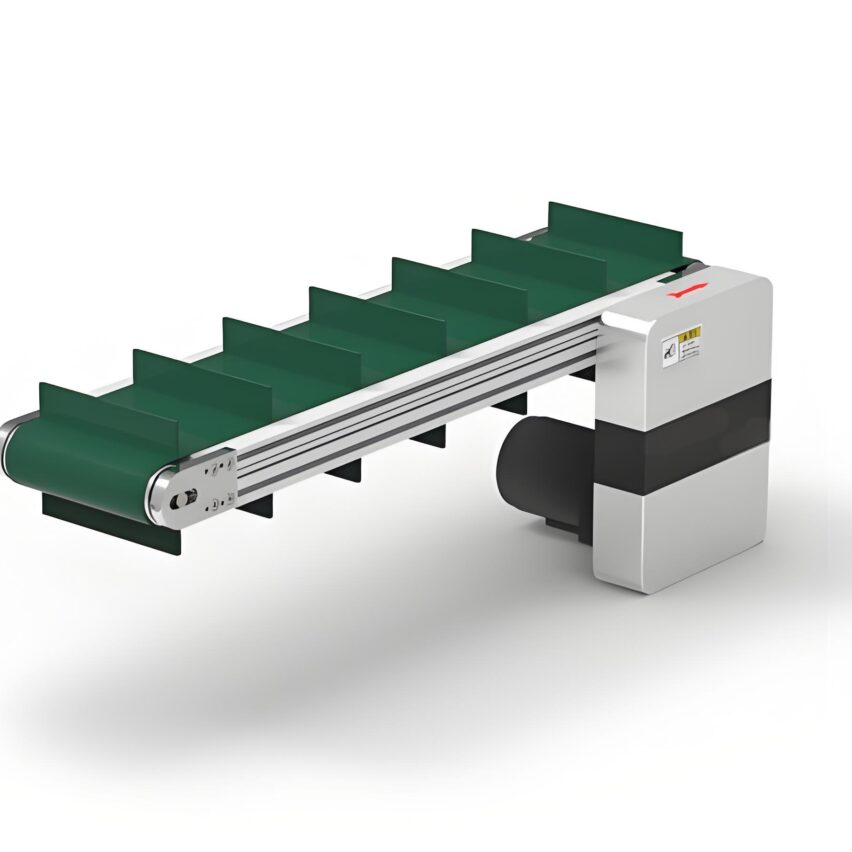Health and safety cornerstones: how to fulfil the iron rule of "zero contamination" in food production?
The stringent standards of hygiene in food production have led to two core challenges for conveyor lines: the risk of microbial growth and the potential for chemical contamination. Hongchang conveyor lines solve this problem through a triple line of defence:
- Fully enclosed designEliminate external pollution, especially suitable for flour, icing sugar and other easy to fly raw materials transport, to avoid cross-contamination;
- Food grade stainless steel(304/316L) body structure, surface roughness Ra ≤ 0.8μm, much lower than the international standard of 1.6μm, to ensure that there is no residual dead space;
- Modular quick release constructionReduces equipment cleaning time by 60%, meeting the production specification of daily deep cleaning.
case-based evidenceAfter adopting Hongchang's plate chain line, a dairy company has reduced the exceedance rate of total colony detection from 3.2% to 0.4% per month, and passed the FDA's flight inspection directly.
The efficiency revolution: How to break through efficiency bottlenecks in continuous production?
Food processing requires 24-hour continuous operation, and Hongchang conveyor lines achieve the goal of "zero downtime" through technology integration:
- Dynamic Load AdaptationIntelligent frequency conversion system automatically adjusts the speed according to the material weight (50kg-2000kg), reducing energy consumption by 35%.
- Fault prediction mechanismVibration sensors monitor chain tension in real time, providing 48 hours advance warning of potential breakage risks.
- Man-machine co-optimisationU-shaped layout of the production line reduces the distance travelled by workers and improves the efficiency of the packaging process by 40%.
| Traditional production line pain points | Hongchang Solutions |
|---|---|
| Sudden downtime losses | Dual drive redundancy system |
| Production changeover took 2 hours | Quick-change modules (15 minutes) |
| Maintenance cost as a percentage of 18% | Self-lubricating chain link design |
Scenario-based selection guide: How to match conveying solutions for different food categories?
1. Fresh food processing area(meat/fishery)
- conflict of needs: Anti-corrosion needs vs. equipment corrosion
- Hongchang Programme: TGD Tape Bucket Elevator + Food Grade PU Conveyor Belt, Resistant to Low Temperature Salt Water Rinsing (Stable Operation in -30℃ Environment)
2. High-temperature process scenarios(baking/frying)
- sore point: High-temperature deformation leading to runaway
- technical responseSilicone coated chain plate is resistant to high temperature of 250℃, coefficient of thermal expansion ≤0.5mm/m.
3. Flexible production requirements(Multi-category small batch)
- adoptionNSE High Speed Plate Chain SystemThe switching flexibility is achieved through three configurations:
▶ Biscuit dryer: Anti-debris collection chute
▶ Chocolate line: thermostatic sandwich design
▶ Frozen food line: -40°C cold-resistant chain links
Future challenges: how intelligent upgrades can reconfigure the logic of food delivery?
Current food conveyor lines are still limited bydata silo-Hongchang is promoting the construction of an IoT platform to achieve evolution through three major breakthrough points:
- blockchain traceability: implant RFID chips in the conveying process, real-time recording of temperature, humidity, vibration and other parameters
- AI Energy Efficiency ModellingPredicts peak loads based on historical data, dynamically adjusts motor power
- Digital twin maintenance: 3D Simulation System Previews Equipment Aging Path, Improves Accuracy of Spare Parts Replacement 90%
The essence of upgrading the food industry isThe Game of Safety and EffectivenessWhen most companies are still struggling with stainless steel thickness, Hongchang has turned to molecular level surface treatment technology. When most companies are still struggling with the thickness of stainless steel, Hongchang has turned to molecular-level surface treatment technology; when the industry is showing off its conveying speed, its R&D focus has already turned to breakthroughs in energy consumption ratio. Perhaps the real competitiveness does not lie in the equipment itself, but in the ability to make the conveyor line the "silent guardian" of food safety - no need to make noise, but always present.













